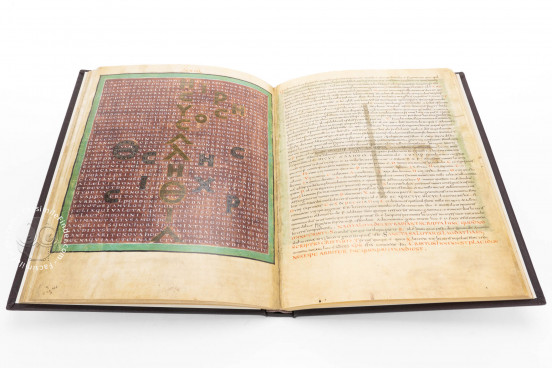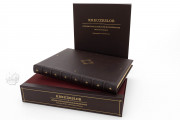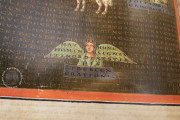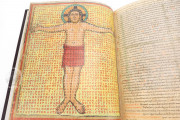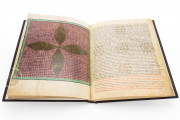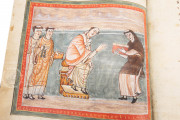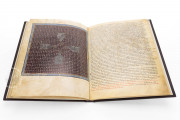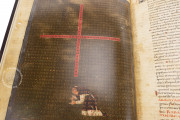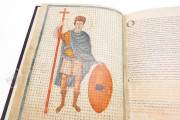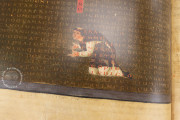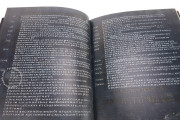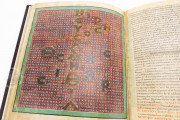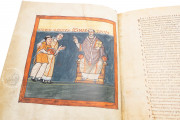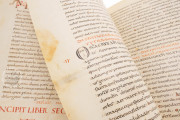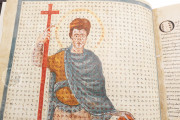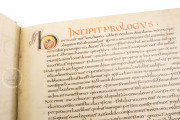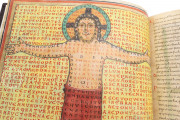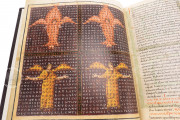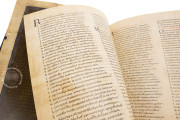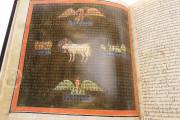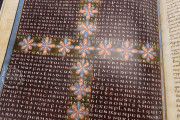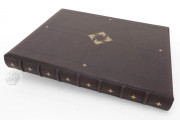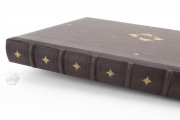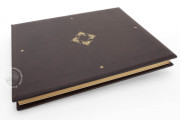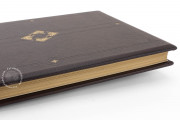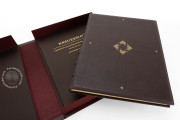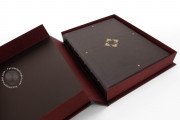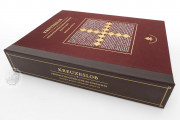The Vatican copy of In Honor of the Holy Cross by Rabanus Maurus (d. 856) is the most artistically accomplished manuscript of the text. Copied in the second quarter of the ninth century at the author's monastic home at Fulda, it was probably made under his direct supervision. Its twenty-eight full-page figured poems on the theme of the Christian cross are preceded by a figured poem honoring Emperor Louis I "the Pious," an acrostic identifying the author, and a pair of presentation frontispieces.
The Vatican manuscript is the earliest surviving witness to Rabanus's widely copied series of image-texts, a tour de force of learning and ingenuity and a complex object inviting prolonged meditation. It is closely related to the Vienna In Honor of the Holy Cross, also thought to have been made under Rabanus's direction.
Texts within Text
The image-texts of In Honor of the Holy Cross comprise square grids of letters that form poetic texts that address the cross as an expression of the mystical cosmos. The letters are positioned on multi-colored backgrounds that form shapes, letters, and figures. The letters on each of those shapes form another text. The supplemental messages are embodied both in the words and in the shapes formed by the letters.
Reading in All Directions
The reader/viewer must be flexible in approaching the versus intexti ("verses inside the text"), their meaning sometimes only being revealed by reading vertically, rather than left to right, or continuously around a circle (as in Poem 7, fol. 14v).
Sumptuous Coloration
The Vatican manuscript is remarkable for the use of deep blues and purples, as well as other deeply saturated colors. This presentation draws attention to the shapes of the versus intexti, adding to their textual messages. For example, in Poem 4 the contrast between the deep purple background and the orange color of the wings and robes of the seraphim (above) and the golden color of the wings and robes of the cherubim (below) draws attention to the delicate rendering of the angels (fol. 11v).
A Saint, a Pope, an Emperor, and the Author
Although Rabanus's work is a complex interpretive treatise on the cross, historical figures are also represented in the manuscript. The two frontispieces focus on Saint Martin (d. 397), Bishop of Tours, and Pope Gregory IV (d. 844) (fols. 2v and 3v). The Frankish Emperor and the author appear in figured poems (fols. 4v and 35v).
A Showcase of Display Capitals
Three scribes contributed to the making of the manuscript, two working in the second quarter of the ninth century and the third after 847. They all wrote in Caroline Minuscule, the period's prevailing and highly legible script. One of those scribes was responsible for the magisterial Uncials of the figured poems.
Poems Presented Twice
All the figured poems are repeated in a separate section of the book written in Caroline Minuscule in two columns (fols. 36v-43r), a layout that makes them easier to read.
In the Collection of the Queen of Sweden
The manuscript was in the library of Christina (1626-1689), Queen of Sweden, which was purchased for the Vatican in 1690. Its current binding of dark brown leather probably dates from its time in Christina's collection.
We have 1 facsimile edition of the manuscript "Vatican In Honor of the Holy Cross": Kreuzeslob. Frühmittelalterliche Bildgedichte von Hrabanus Maurus. Reginensis Latinus 124 facsimile edition, published by Belser Verlag, 2019
Request Info / Price
